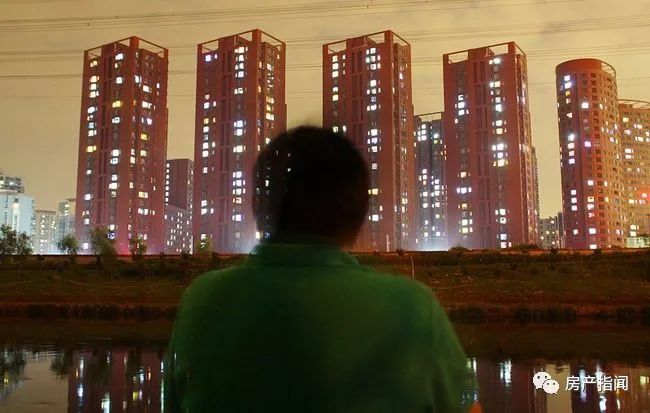Because the official account official has adjusted the push rules, if you want to continue to receive the contents of the official account, please set the public building number of the building as the star sign, and more points of the “look at” and “praise” in the end of the article
.
“If you want to continue to receive the official account, please note that the” WeChat “is a public key
.
Star setting: enter the official account homepage, click the “top” corner, click “set star”, and the official account will appear yellow Pentagram (Android and iOS user operation alike)
.
Statement: this analysis is a preliminary analysis of the whole design based on the collected drawings and data, combined with the experience in the design of plate column structure, and provides some thoughts from the perspective of code comparison in combination with Chinese codes
.
It is not used as the basis and basis for any event analysis
.
1
.
Background Recently, a 12 storey slab column residential building (13 floors partially collapsed) suddenly collapsed in Florida
.
At present, the accident has caused at least 9 deaths and 156 missing
.
The residential building in Surfside was completed in 1981
.
When it collapsed, the authorities were re certifying the 40 year old building in accordance with urban safety regulations
.
As a common structural form, reinforced concrete slab column structure has been widely used in practical engineering
.
Because the plate column joint is prone to punching failure, it is often regarded as the weakest and extremely important link of the structural system
.
In particular, the redistribution of internal forces caused by the failure of individual joints may lead to a wider range of damage and even the continuous collapse of the whole structure
.
This analysis is based on the structure of the accident prototype, maintains its material grade and geometric dimension, and adopts Chinese specifications for preliminary review
.
The main information of the structure is shown in Table 1
.
The typical floor height is 8 feet 10 inches and the floor height is about 2.69M
.
two The nodes corresponding to the intersection of axis 8 and axis L are selected during the review, calculation and analysis of the impact shear bearing capacity of typical nodes (see Figure 1)
.
Figure 2 shows the floor plan
.
The standard value of 28 day cylinder strength of concrete is 3000psi (21MPa), the plate thickness is 8 inches (203.2mm), and the reinforcement at the bottom of the plate is #4 (0.5 inches, 12.7mm)
.
The column section size is 14 × 18 inches (355.6 inches) × 457.2mm), and the thickness of the protective layer is 3 / 4 inch (19.05mm)
.
Figure 1 typical column grid layout 2 L-8 axis typical building layout Taking the typical l-axis intersection 8-axis joint as an example, the punching shear load is compared with the punching shear bearing capacity of the specification
.
Four cases (0 ~ 1kn / m2) are considered for the uniformly distributed load of the surface course and ceiling of the project, and four cases (0 ~ 1.5kn / m2) are considered for the uniformly distributed load of the residential wall
.
Under the condition of 3000psi floor strength and large additional load, it does not meet the requirements of the specification
.
When the floor strength increases to 4000psi, it can barely meet the requirements of American codes under some load conditions, but it can hardly meet the requirements of Chinese codes
.
three Estimation of typical column section During the calculation and analysis, the above typical position is still selected
.
The section column corresponding to the junction of axis L and axis 8 is 13 layers in this part of the area
.
The estimation method is adopted, and the different strengths of 4000psi-6000psi are considered as the boundary position
.
Compare the strength ratio of American specifications (strength reduction coefficient 0.65) and the axial compression ratio of Chinese specifications
.
The influence of live load reduction factor, effective length of column, column reinforcement, etc
.
and the weight of column are not considered for the time being
.
During estimation, the dead load is 0.5kn/m2 according to the method of additional ground, and the uniformly distributed load is 1.0kn/m2 according to the method of wall
.
The ratio is expected to increase if the influence of column section weight and wind load is considered
.
It can be seen that its axial bearing capacity does not meet the specification requirements
.
4
.
Preliminary analysis of overall modeling In the overall estimation of the structure, the dead load is 0.5kn/m2 according to the method of additional ground, and the uniformly distributed load is 1.0kn/m2 according to the method of wall
.
The layout is modeled according to the obtained data
.
The structural analysis is carried out according to the two conditions of anti-seismic (anti-seismic according to 6 degrees) and non anti-seismic
.
The basic wind pressure of wind load is 1.1kn/m2, which is calculated according to sea roughness class A
.
The overall model of the structure is shown in the figure below: Figure 3 preliminary calculation model of the structure figure 4 axial compression ratio of basement structure figure 5 axial compression ratio of first floor to third floor structure figure 6 displacement angle between seismic lower layers Figure 7 displacement angle between lower layers under wind load Figure 5
.
Consideration on Design 1) less concrete walls According to the foreign design concept, most of the columns are gravity columns, and the lateral force resistance mainly depends on the shear wall
.
However, from the drawings, there are many shear walls in Y direction and few shear walls in X direction
.
Figure 8 above ground structural wall From the preliminary calculation results, the deformation in X direction is large under wind load and earthquake
.
The collapse sequence is shown in the figure below
.
From the progress of the accident, the g-axis shear wall (vertical long wall + horizontal wall) in the West effectively prevented the continuous collapse of the left structure; The M-axis on the east side has only vertical shear wall and no horizontal shear wall
.
The M-axis only temporarily delayed the collapse progress
.
Due to the lack of lateral stable support, the collapse finally occurred
.
Figure 9 collapse sequence From the photos of the damage accident site, the shear wall of the swimming pool in the southeast corner effectively prevented the continuous collapse around the basement
.
The design and photos are shown in the figure below
.
Figure 10 shear wall of swimming pool in basement at southeast corner Figure 11 shear wall of swimming pool in basement at southeast corner 2) concrete column section is too small From the section estimation and overall preliminary calculation, compared with Chinese codes, the column is obviously smaller, the maximum axial compression ratio at the bottom is 1.89, and most of the right side do not meet the requirements; Compared with the American code, the punching shear bearing capacity of the joint area needs to be further reviewed
.
3) Local roof According to the data obtained, some walkways at the 4-axis position are converted by adding corridors, and the roof slab is directly connected to the wall (whether the wall type is concrete or masonry is uncertain), which is very easy to cause damage
.
Figure 12 partial roof corridor Figure 4) partial conversion In order to meet the requirements of lanes, the structure is converted on the first and second floors
.
The conversion corresponding to the collapsed part on the right is shown in the figure below
.
From the perspective of domestic specifications, further measures need to be taken for this conversion, including two-way tie-in at the conversion column
.
Figure 13 partial conversion on the right (the above analysis was mainly completed by sun Hailin and Zuo Lingxiao of China Architectural Design and Research Institute, and Li Yi of Beijing University of technology, Zheng Zhe and Fei Yifan of Tsinghua University also contributed to the work of this paper) Previously, Lu Xinzheng’s research group also visually simulated the collapse process of a 12 story apartment building
.
See below for details: Reasonable and real virtual scene construction of building collapse ruins is very important for disaster emergency and rescue training
.
The finite element method simulates the collapse process of structure with strong nonlinearity and super large deformation, the calculation cost is high, and it is difficult to consider block collision
.
Although the method based on physical collapse simulation has the advantage of small deformation, it is not accurate in the stage of structural collapse simulation.
.



